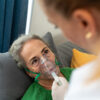What can you do when your loved one faces medical emergency in a far away land? The best option is to avail services of air medical transport. But how should you choose the right air ambulance services? Let’s find out!
The air ambulance service is designed to successfully and safely bring patients to secure medical care conditions from remote locations. But before you hire any random air ambulance service provider, you need to ensure that your loved ones get the best care they need.
Read along to know what the best medical air ambulance services will have in common
- Updated Air Ambulance Service License
All air ambulance transport providers are required to have a license from the federal aviation administration along with advanced life support and other related certifications. This is one way to authenticate the services they offer.
- On-Sight Medical Consultant Availability
It is very important that medical assistance transportation deputes a specialized medical consultant on every flight. The medical consultants are required to constantly remain in contact with the patient’s doctor for properly monitoring his/her health.
- Availability Of Air Medical Transportation Team
A quality air ambulance transport should be well equipped with highly qualified and professional team of paramedics, doctors, nurses and technicians for any emergency requirement. This ensures good care of patients while traveling. The medical personals are required to be well certified professionals to effectively handle even the most critical situations.
- Price Charged By The Air Medical Transport
The possible costs charged by the medical air ambulance will be determined by a variety of factors. So make sure when you request a quote from your service provider you cross check the price quoted for individual service.
- Ask for Therapeutic Medical Oxygen
Availability of therapeutic medical Oxygen is very essential on a flight and must always be available. Air travel at high altitudes generally results in reduction of oxygen which could deteriorate a patient’s condition and so he might require oxygen.











